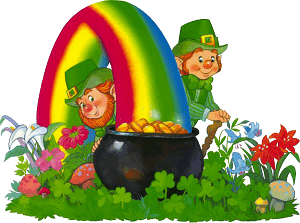A fairy is a type of mythical being or legendary creature, a form of spirit, often described as metephysical, preternatural or supernatural. Fairies resemble various beings of other mythologies, though even folklore that uses the term fairy offers many definitions. Sometimes the term describes any magical creature including goblins or gnomes, at other times, the term only describes a specific type of more ethereal creature.
Fairies are generally described as human in appearance and having magical powers. Their origins are less clear in the folklore, being variously dead, or some form of demon, or a species completely independent of humans or angels.
Much of the folklore about fairies revolves around protection from their malice, by such means as cold iron (iron is like poison to fairies, and they will not go near it) or charms of rowan and herbs, or avoiding offense by shunning locations know to be theirs. In particular, folklore describes how to prevent the fairies from stealing babies and substituting changelings and abducting older people as well.
Folk beliefs:
1. That fairies were dead or some sub class of the dead such as a banshee which is sometimes described as a ghost.
2. Another view was that fairies were an intelligent species, distinct from humans and angels such gnomes and sylphs.
3. An belief was that they were a class of demoted angels. One popular story held that when the angels revolted, God ordered the gates shut, those still in heaven remained angels, those in hell became devils and those caught in between became fairies. Others held that they had been thrown out of heaven, not being good enough but they were not evil enough for hell. This may explain the tradition that they had to pay a tithe to Hell.
4. A belief was that fairies were demons entirely. This belief became much more popular with the growth of Puritanism. The hobgoblin once a friendly household spirit became a wicked goblin. Dealing with fairies was in some cases considered a form of witchcraft and punished as such in this era.
5. A less common belief was that fairies were actually humans; one folktale recounts how a woman had hidden some of her children from God, and then looked for them in vain, because they had become the hidden people, the fairies.
6. Many of the Irish tales of the Tuatha Dé Danann refer to these beings as fairies, though in more ancient times they were regarded as goddesses and gods. The Tuatha Dé Danann were spoken of as having come from islands in the north of the world or, in other sources from the sky. After being defeated in a series of battles with other otherworldly beings and then by the ancestors of the current Irish people, they were said to have withdrawn to the sídhe (fairy mounds), where they lived on in popular imagination as fairies.
Fairies are generally described as human in appearance and having magical powers. Their origins are less clear in the folklore, being variously dead, or some form of demon, or a species completely independent of humans or angels.
Much of the folklore about fairies revolves around protection from their malice, by such means as cold iron (iron is like poison to fairies, and they will not go near it) or charms of rowan and herbs, or avoiding offense by shunning locations know to be theirs. In particular, folklore describes how to prevent the fairies from stealing babies and substituting changelings and abducting older people as well.
Folk beliefs:
1. That fairies were dead or some sub class of the dead such as a banshee which is sometimes described as a ghost.
2. Another view was that fairies were an intelligent species, distinct from humans and angels such gnomes and sylphs.
3. An belief was that they were a class of demoted angels. One popular story held that when the angels revolted, God ordered the gates shut, those still in heaven remained angels, those in hell became devils and those caught in between became fairies. Others held that they had been thrown out of heaven, not being good enough but they were not evil enough for hell. This may explain the tradition that they had to pay a tithe to Hell.
4. A belief was that fairies were demons entirely. This belief became much more popular with the growth of Puritanism. The hobgoblin once a friendly household spirit became a wicked goblin. Dealing with fairies was in some cases considered a form of witchcraft and punished as such in this era.
5. A less common belief was that fairies were actually humans; one folktale recounts how a woman had hidden some of her children from God, and then looked for them in vain, because they had become the hidden people, the fairies.
6. Many of the Irish tales of the Tuatha Dé Danann refer to these beings as fairies, though in more ancient times they were regarded as goddesses and gods. The Tuatha Dé Danann were spoken of as having come from islands in the north of the world or, in other sources from the sky. After being defeated in a series of battles with other otherworldly beings and then by the ancestors of the current Irish people, they were said to have withdrawn to the sídhe (fairy mounds), where they lived on in popular imagination as fairies.



.jpg)
.jpg)



